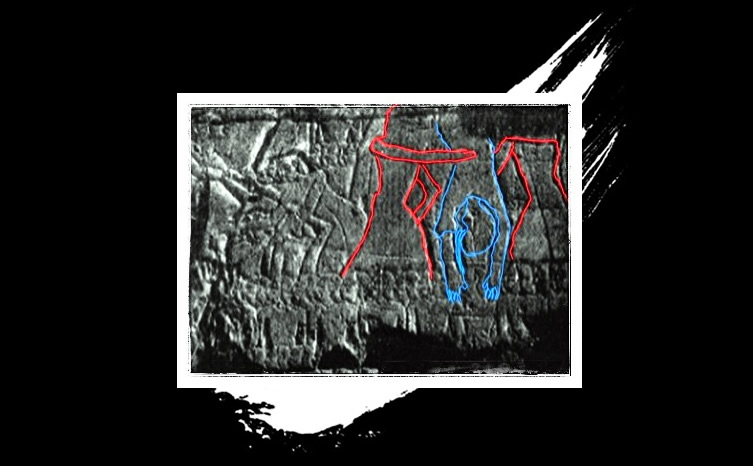For as long as there have been people and water, there has been morbidity and mortality from drowning. The first documented resuscitation of a drowning patient was carved in 1237 B.C. on the Pylon of the Ramesseum in Thebes, Egypt. In this depiction, the “Great” of Aleppo was rescued from the Orontes River by his lieutenants and held upside down to drain the water from his lungs.

From the Pylon of the Ramesseum, Thebes.
Photographed by WMF Petrie.Outlines by Justin Sempsrott, MD.
Their resuscitative efforts were unsuccessful, but the idea of trying to remove water from the lungs of drowning patients persisted throughout the centuries, most recently and famously with the misguided push by Dr. Henry Heimlich for the use of his maneuver on drowning patients.
Even stranger treatments have been documented, including the use of tobacco enemas to provide “warmth and stimulation” to the apparently dead. This was common practice until the early 19th century when doctors discovered that nicotine was a toxin and not actually helpful, giving rise to the term “blowing smoke up someone’s ass." In the American west and in the Far East, drowning patients were thrown over a horse or buffalo and galloped in a circle providing a crude form of chest compressions. As with many early medical practices, it only took a single success, be it by skilled intervention or complete chance, for some of these practices to become standard.
The history of drowning resuscitation can be viewed as a series of small steps, as just described, followed by two large leaps. The first was the revolutionary work done by Dr. Peter Safar in the 1950s. His book, ABC of Resuscitation (1957), introduced mouth-to-mouth ventilation and laid the groundwork for modern CPR practice and training. In the decades following, the understanding of the important role that a lack of oxygen plays on long-term brain function continued to improve. Unfortunately, in the treatment of drowning patients, the focus continued to remain on preservation of lung function, with much work being done to better understand the role of steroids and antibiotics. It took a concerted effort by the drowning treatment community to bring the focus back to the basics of treatment and re-focus attention on delivering oxygen to the brain.
This effort was fueled by the second large leap, lead by Dr Joost Bierens, a Dutch lifeguard turned anesthesiologist, who convened the 1st World Congress on Drowning in Amsterdam in 2002. This meeting of world experts produced the first consensus guidelines for the treatment of drowning and identified some major areas of disconnect in our understanding of the problem, including a lack of uniform definitions and reporting. This group was the first to emphasize that drowning was a process, not an outcome. They also rightfully defined drowning as "the process of experiencing respiratory impairment from submersion/immersion in liquid.”
This initial endeavor was followed by the 2007 World Water Safety Conference in Porto, Spain, which brought to light the importance of a focused effort on developing nations, and the 2011 World Conference on Drowning Prevention in Da Nang, Vietnam, which served as a platform for scientific and medical research and organizational networking like no other in the history of the drowning treatment community. As we look to the future of our understanding of drowning treatment, we turn our attention to the next World Conference on Drowning in Potsdam, Germany in October 2013.
As with all medicine, our knowledge base is growing exponentially as more research and collaboration become available to more people. Nothing has fueled the rapid, open exchange of information more than social media. Social networks, particularly Twitter, have ignited a revolution in how we look at education and learning, and even spawned the concept of FOAM, or Free Open Access Medical Education. Drowning prevention groups from around the globe are able to create free, open-source lifeguard manuals for resource deficit areas , produce short educational films, and even create a global drowning tracker that can be updated via text message in areas that don't have Internet access.
This is a very exciting time to be involved in the water rescue and drowning treatment community. I have been an ocean lifeguard in Jacksonville Beach, Fla., since 1996, and I am currently the Founder and Executive Director of Lifeguards Without Borders and an Emergency Medicine Physician. Our understanding of the scope of the global burden and the treatment of drowning has come a long way since the days of blowing smoke. I look forward to bringing updates and rescue tales to the readers of Wilderness Magazine through this column.